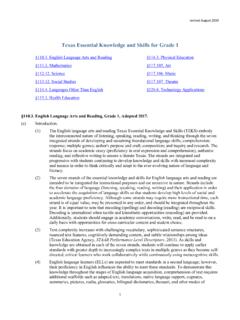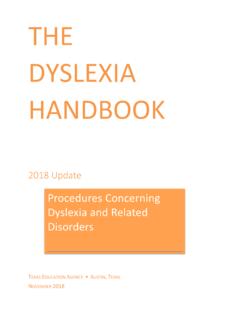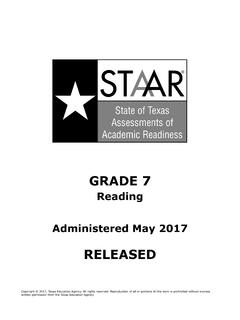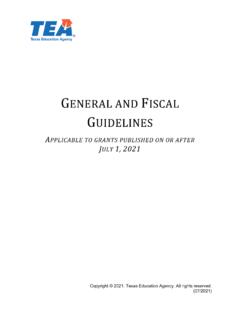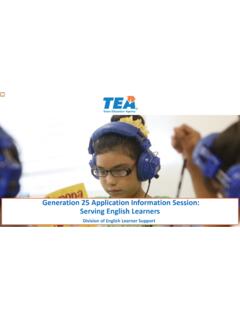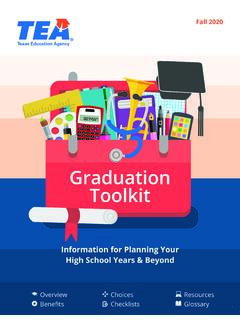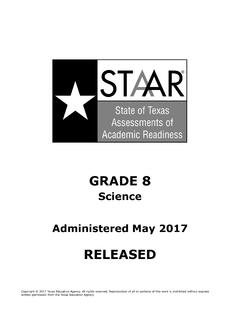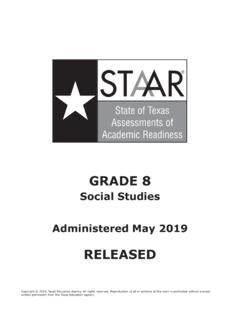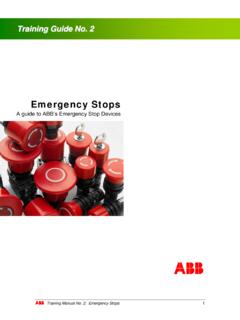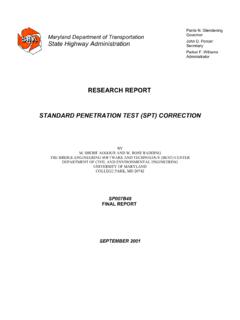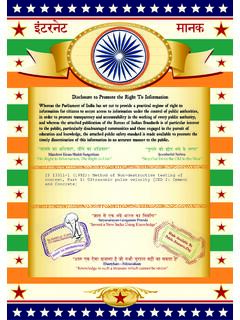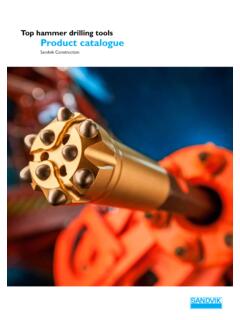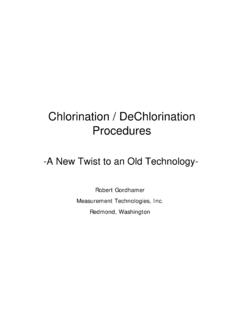Transcription of STAAR GRADE 5 SCIENCE TB RELEASED 2018
1 STAARS tate of Texas Assessments of Academic Readiness GRADE 5 SCIENCE Administered May 2018 RELEASED Copyright 2018, Texas Education Agency. All rights reserved. Reproduction of all or portions of this work is prohibited without express written permission from the Texas Education Agency. SCIENCE SCIENCE Page 3 DIRECTIONS Read each question carefully. Determine the best answer to the question from thefouranswerchoices in theansweronyouranswer document. 1 Which of these devices is the only one NOT designed to produce both sound and light energy? A C B D SCIENCE Page 4 2 The diagram shows layers deposited under a body of water.
2 This layering continued for millions of years. What most likely happened to the dead plants and animals? F They were eaten by scavengers. G They became fossil fuels. H They were washed away by water. J They became an underground aquifer. SCIENCE Page 5 Water?Dead plantsand animalsDead plantsand animalsShark Tail Fin Bony Fish Tail Fin Fin with two lobes of different sizes Stiff fin No bone in fin No muscle control of fin Can swim only forward Fin with two lobes of the same size Flexible fin Thin, bony spines in fin Control of fin by muscles Can swim forward and backward Mikhail Michael 3 After a trip to an aquarium, some students compared the tail fin of sharks with the tail fin of bony fish.
3 The students made a chart listing characteristics of each type of tail fin. Based on this information, what is most likely an advantage of the bony fish tail fin over the shark tail fin? A It is easier for a bony fish to change direction quickly since muscles control the movement of the tail fin. B The bones in the tail fin help a bony fish sink to lower depths in the water when searching for food. C The flexible tail fin is fanned by the water, so a bony fish uses less energy to swim. D The thin spines of the tail fin prevent a bony fish from being seen by larger predator fish.
4 SCIENCE Page 6 4 A student places 250 g samples of clay, sand, gravel, and silt in separate flower pots. The pots are set on a wire rack, and dishes are placed beneath the pots so that water can drip through holes and collect. The student then pours 100 mL of water over the sample in each pot. The student measures the time it takes for water to begin dripping from the bottom of each pot. Clay Sand Gravel Silt What property of soils is the student most likely examining with this procedure? F The differences in texture between wet and dry soils G How well different soils retain water H How much water is needed to dissolve different soils J The amount of time it takes different soils to dry SCIENCE Page 7 5 The table lists some physical properties of two objects.
5 Object 1 Object 2 Solid Solid Insulates thermal energy Conducts thermal energy Less dense than water More dense than water Poor electrical conductor Good electrical conductor Based on their properties, which of the objects is most likely a metal? A Object 1, because it is a solid that is less dense than water B Object 2, because all metals float in water C Object 2, because metals conduct thermal energy and electricity D Object 1, because it can be used to provide insulation for thermal energy 6 Which of these describes one or more living organisms that depend on another living organism to survive?
6 F Bacteria living in the mouth of a horse G Ivy plants growing up a fence to obtain more sunlight H Mold living on a hard, rocky surface J An angelfish releasing carbon dioxide into pond water SCIENCE Page 8 7 The picture shows an athlete hitting a ball with a tennis racquet. Galina What is the athlete demonstrating in the picture? A Doing work by pushing the ball and changing its motion and position B Changing the position but not the motion of the ball C Doing work by pulling the racquet and changing the ball s position but not its motion D Changing the position and motion of the ball without doing any work SCIENCE Page 9 8 A partial wetland food web is shown.
7 Which statement correctly describes the transfer of energy in a food chain in this wetland? F Energy is transferred from hawks to shrews to grasshoppers to marsh grasses. G Energy is transferred from marsh grasses to crickets to hawks to frogs. H Energy is transferred from grasshoppers to crickets to frogs to hawks. J Energy is transferred from cattails to crickets to shrews to hawks. 9 A group of students is performing an investigation to measure how much liquid water is produced from a 10 L sample of snow. What must occur in order for the students to perform this investigation?
8 A The sample must be kept in a freezer. B The temperature of the sample must change. C The investigation must be performed outside. D The physical state of the sample must remain the same. SCIENCE Page 10 Marsh grassesCattailsHawksGrasshoppersShrewsSn akesFrogsCrickets10 A bright-red male cardinal comes to a school bird feeder every morning. Like other cardinals, this bird makes a sharp chirping sound as it hops around the bird feeder. Which of these is a learned behavior of this bird? F Having red feathers G Eating seeds during the day H Coming to the bird feeder each morning J Making a chirping sound 11 One type of fuel was used for thousands of years before other fuels were commonly used.
9 Which fuel is an alternative resource that was most likely the first fuel used by humans? A Coal B Natural gas C Petroleum D Wood SCIENCE Page 11 12 Some students are feeding a crab in an aquarium. They use tongs to place the food directly in front of the crab. The students look through the side of the aquarium. They notice that the image of the tongs appears to break as the tongs enter the water. Which property of light are the students observing in this situation? F Light can be refracted and separated into different colors as it moves from air to a different medium. G Light is refracted as it moves from one medium to another medium.
10 H Light travels in a straight line and can be reflected off the surface of water. J Light is absorbed by water and reflected off glass. SCIENCE Page 12 CrabFoodTongsWaterCharacteristics of a Valley Round-bottom floor Nearly vertical sides Small hills containingsediments of many sizes 13 Students on a field trip observed a valley and wondered how it was formed. The three major characteristics of the valley were recorded. This valley was most likely formed by A a rapid series of earthquakes B volcanic activity C a flood with rapidly moving water D the movement of a glacier SCIENCE Page 13 14 The abalone is a type of sea snail.
